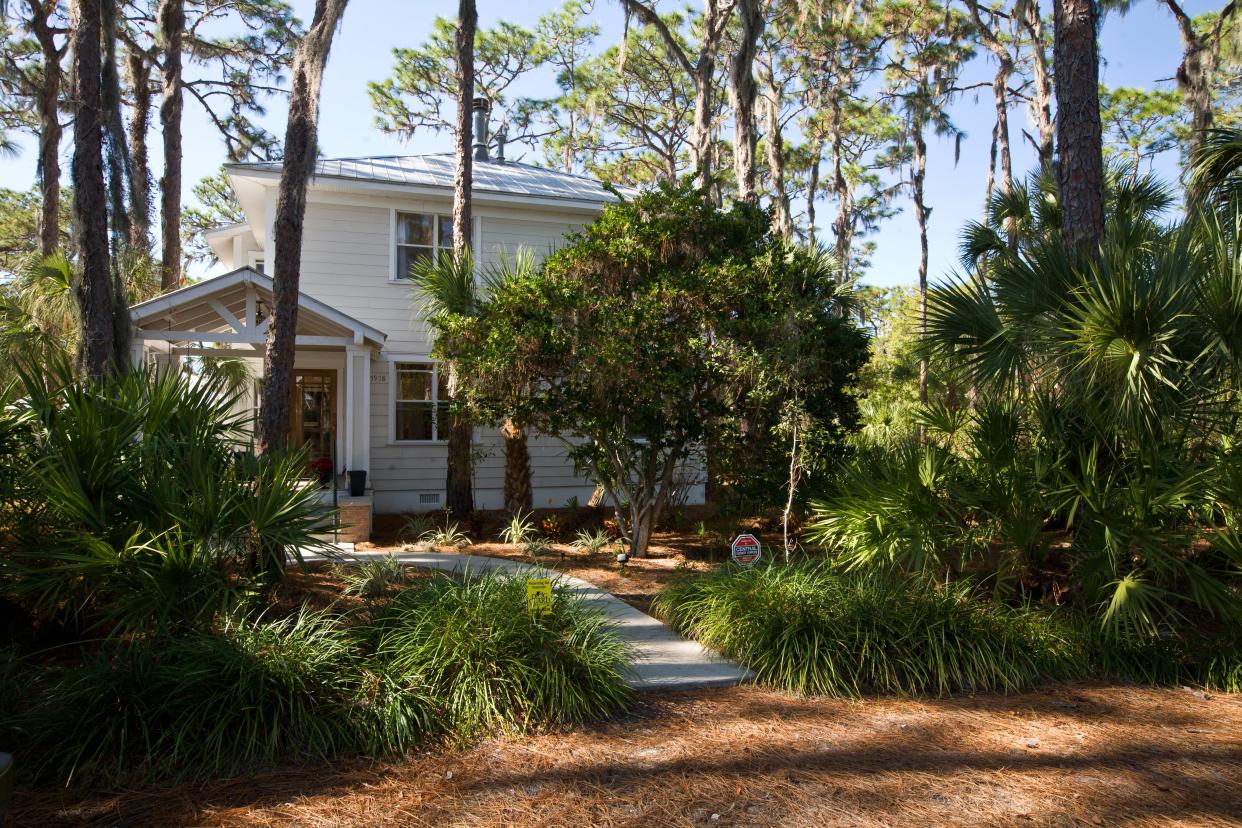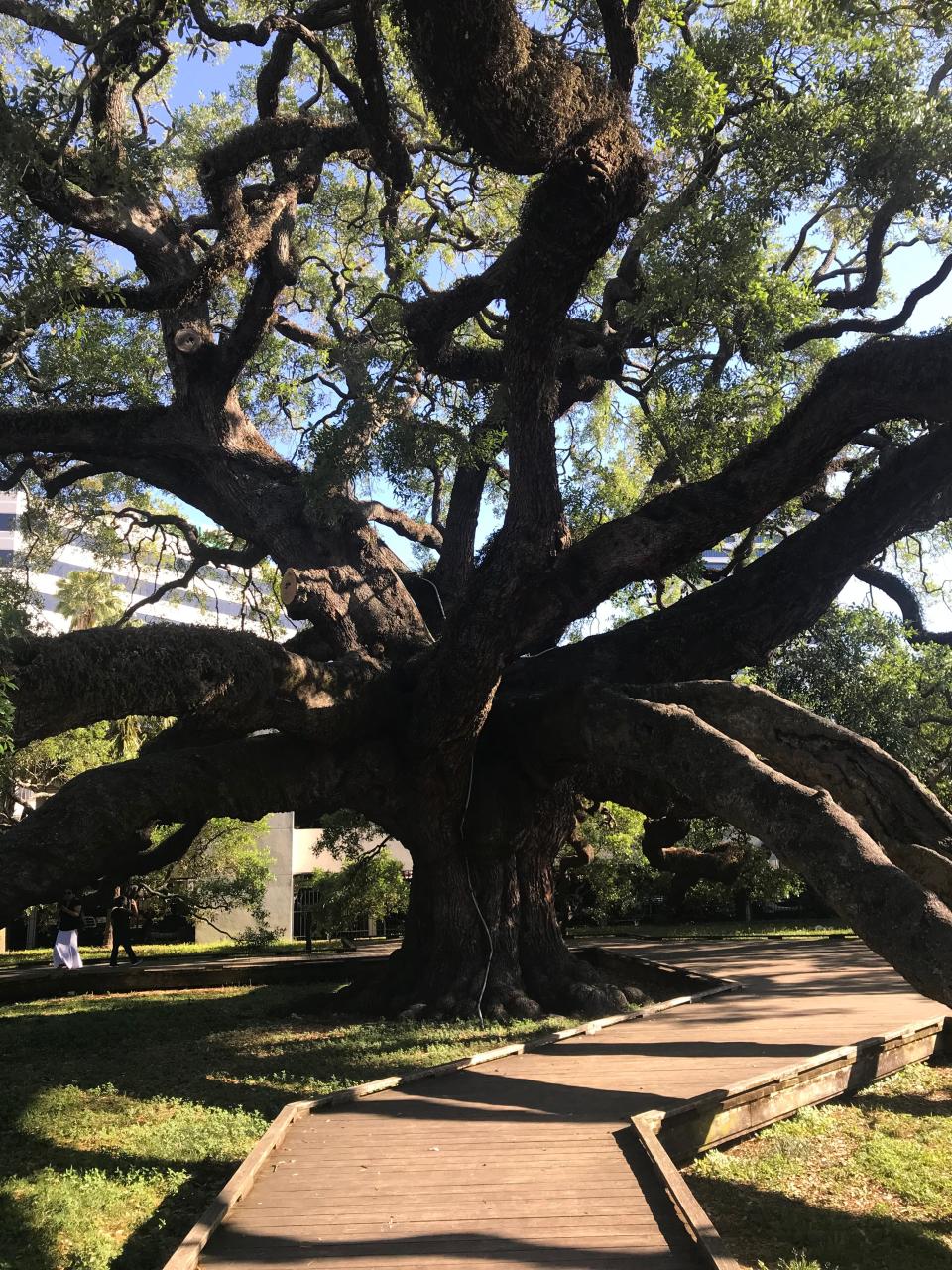From fighting climate change to reducing air pollution, the benefits of trees in your yard

Friday was National Arbor Day. If it caught you off guard, or you didn’t remember, don’t worry. There is never a bad time to appreciate the role that urban trees play in helping to make Jacksonville a more livable community. When I talk to a group about trees I often ask: “What benefits do trees provide?”
The typical answer is usually “that they provide beauty,” or that “they give us shade and oxygen.” Some may say that they provide lumber, or paper. All those statements are true. However, city trees quietly provide us with many more additional services that are very important in today’s urban environment. These additional services are called “ecosystem services.” Ecosystem services can be defined as the benefits to human beings provided by the environment.
Let’s begin with a few of the more well-known services trees provide. Trees can increase the value of property. A yard with large healthy trees growing in it has a greater curb appeal than a yard with no trees. A healthy landscape that includes trees can increase property value by 10-20 percent. Research has also shown that the closer that a home is to a forested area, the higher its value.
In Jacksonville, we get a lot of rain. The runoff from rainfall is typically stored in retention ponds so it can be slowed down and treated before it gets to the St. Johns River. However, our urban trees serve as mini retention ponds by helping to control runoff as the rain falls by intercepting and holding rain on leaves, branches, and bark, increasing infiltration and storage of rainwater through the tree's root system, and reducing soil erosion by slowing rainfall before it strikes the soil.
More tree tips: Before you get out the chainsaw, here are 4 tree pruning mistakes to avoid
More tree tips: When you should hire an arborist and what you need to know before hiring one
The results of a recent study by the Green Infrastructure Center Inc. found that the citywide tree canopy of Jacksonville is 55.5 percent. During an average volume rainfall event in Jacksonville, the city’s trees take up an average of 1.4 billion gallons of water. Without these trees, the cost of building stormwater retention ponds and other infrastructure to handle the increase in stormwater runoff would run up to $2 billion.
Trees can help us save energy. According to the United States Dept. of Agriculture, the net cooling effect of a young, healthy tree is equivalent to 10 room-size air conditioners operating 20 hours a day. The placement of trees in the landscape is important as well. The warmest part of the day in the summer occurs between 1 and 3 o’clock when the sun is in the southwest sky. A tree planted on the southwest side of the property will help to shade our homes during the hottest part of the day thereby reducing our air conditioning costs. Not only does this save us money in air conditioning but it reduces the strain on the electric grid during the time of peak energy use.

We have all heard about the government’s attempts at stimulating the economy, but did you know that trees have been providing an economic stimulus package for our communities long before it became a government priority? Trees can attract patrons and increase visitation to retail businesses. This was highlighted in a survey of one southern community conducted by U.S. Forest Service researchers, where it was found that the public preferred to patronize businesses and spend up to 12% more where those shopping districts, streets, and parking lots were beautified with trees and other landscaping.
Urban trees improve our quality of life in Jacksonville. They do this by fighting climate change, reducing air pollution and helping us to feel better.
Florida’s urban trees are helping to fight climate change by reducing the amount of carbon dioxide in the atmosphere. For instance, using the National Tree Benefit Calculator (http://www.treebenefits.com/calculator), a 12-inch diameter maple tree can lock up 278 pounds of carbon by storing it in its branches, trunk and roots. Trees also help to prevent the addition of carbon dioxide into our atmosphere by reducing emissions from power plants due to reduced energy use. This carbon storage may not solve the climate change issue, but it shows that trees can be a part of the solution.
Trees have little openings in their leaves called stomata. These stomata allow for air exchange within the leaf. These stomata filter air pollutants out of the air. The air pollutants intercepted by trees include sulfur dioxide, nitrogen dioxide, ash, dust, and smoke particles. Besides filtering out air pollution, trees provide us with oxygen as a by-product of photosynthesis. The same 12-inch diameter red maple example provides $3.12 of benefit by improving air quality. With diseases like asthma, respiratory disease, heart disease all being made worse by air pollution, trees provide valuable health benefits by improving our air quality.
Finally, trees provide services to our physical well-being and safety. A few of the recent findings of tree research include:
People who live in areas with plenty of greenery are more likely to be physically active and less likely to be overweight.
On tree-lined streets, people drive slower, reducing accident risk.
Urban landscaping including trees lowers crime rates.
Homes surrounded by well-maintained trees have less roof damage during storms and hurricanes.
Visual exposure to settings with trees can reduce blood pressure and muscle tension.
Our urban forest is more than just pretty trees. The services our urban trees provide are invaluable. There are opportunities in Jacksonville for you to get involved in our urban forest. They include planting more trees in your own landscape, volunteering for tree plantings at your local school or park or becoming a voice for trees by joining a tree advocacy group. By taking the services of trees into consideration, we all can contribute to the quality of life in Jacksonville. For more information on the ecosystem services our urban trees provide go to: http://chicagorti.org/TreeBenefits.
Larry Figart is an urban forestry extension agent with the University of Florida/IFAS.
This article originally appeared on Florida Times-Union: How trees improve quality of life, raise home values

